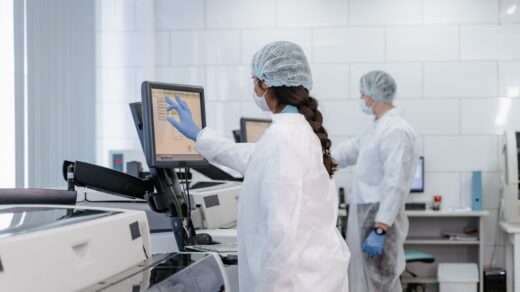Additive manufacturing, commonly known as 3D printing, is revolutionizing the pharmaceutical industry by offering new possibilities in drug design, development, and production. This technology has the potential to transform how medications are manufactured and delivered to patients, paving the way for more personalized and efficient drug production.
Understanding 3D Printing in Pharmaceuticals
3D printing in pharmaceuticals involves creating three-dimensional solid objects from digital files, allowing for the precise layering of materials to produce complex drug formulations. This technology enables:
- Customized dosage forms
- Controlled release profiles
- On-demand drug production
- Complex geometries impossible with traditional manufacturing
Key Applications of 3D Printing in Pharma
- Personalized Dosing: Creating patient-specific doses based on individual needs, potentially improving efficacy and reducing side effects.
- Complex Release Profiles: Designing tablets with intricate internal structures to control drug release over time.
- Polypills: Producing single tablets containing multiple drugs with different release profiles, improving patient adherence.
- Orphan Drugs: Manufacturing small batches of drugs for rare diseases more cost-effectively.
- Rapid Prototyping: Accelerating drug development by quickly producing prototypes for testing.
Benefits of 3D Printing in Pharmaceuticals
- Enhanced drug efficacy through personalized dosing
- Improved patient compliance with easier-to-take formulations
- Reduced waste in drug production
- Faster development cycles for new drugs
- Potential for on-site drug production in pharmacies or hospitals
Challenges and Considerations
- Regulatory Approval: Ensuring 3D-printed drugs meet stringent quality and safety standards.
- Material Limitations: Developing suitable, pharmaceutical-grade materials for 3D printing.
- Scalability: Transitioning from small-scale to large-scale production.
- Quality Control: Implementing effective quality assurance processes for 3D-printed drugs.
Case Study: 3D Printing Success in Pharma
The FDA approved the first 3D-printed drug, Spritam, for epilepsy treatment. This tablet:
- Rapidly disintegrates in liquid, making it easier for patients to swallow high doses
- Demonstrates the potential for creating novel drug formulations using 3D printing technology
Future Trends in Pharmaceutical 3D Printing
- Bioprinting: Exploring the creation of living tissues for drug testing and personalized medicine.
- Continuous Manufacturing: Integrating 3D printing into continuous production lines for increased efficiency.
- AI-Driven Design: Using artificial intelligence to optimize drug formulations for 3D printing.
- Point-of-Care Manufacturing: Developing systems for on-demand drug production in clinical settings.
Conclusion
Additive manufacturing is poised to play a significant role in the future of pharmaceutical production. By enabling personalized dosing, complex formulations, and on-demand manufacturing, 3D printing offers exciting possibilities for improving drug efficacy, patient compliance, and overall healthcare outcomes. As technology advances and regulatory frameworks evolve, we can expect to see more widespread adoption of 3D printing in pharmaceutical manufacturing, ushering in a new era of personalized medicine.



